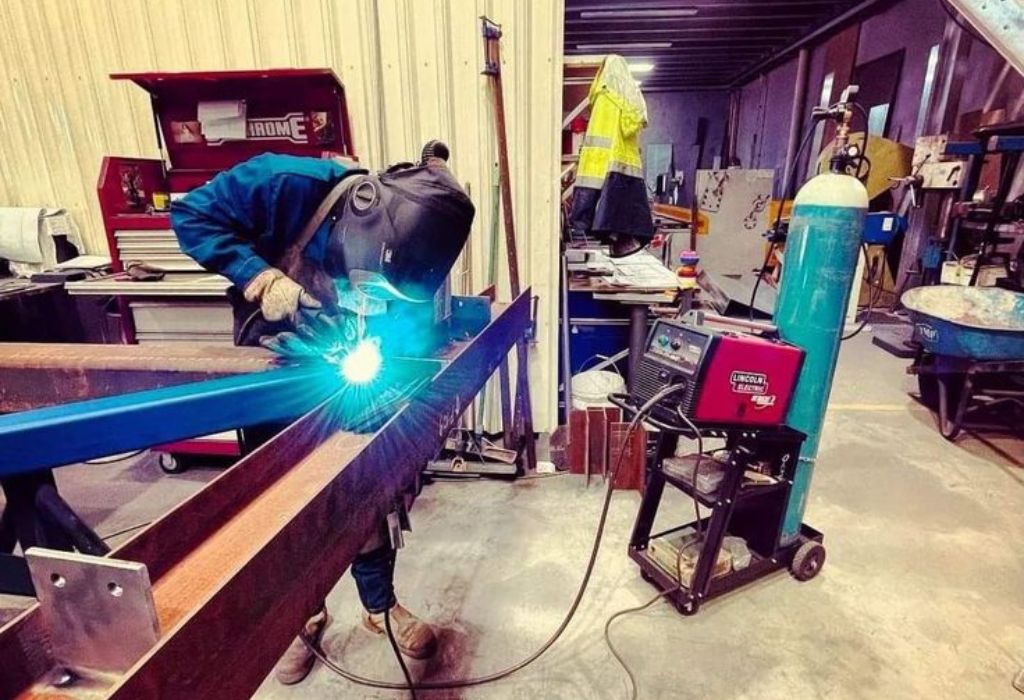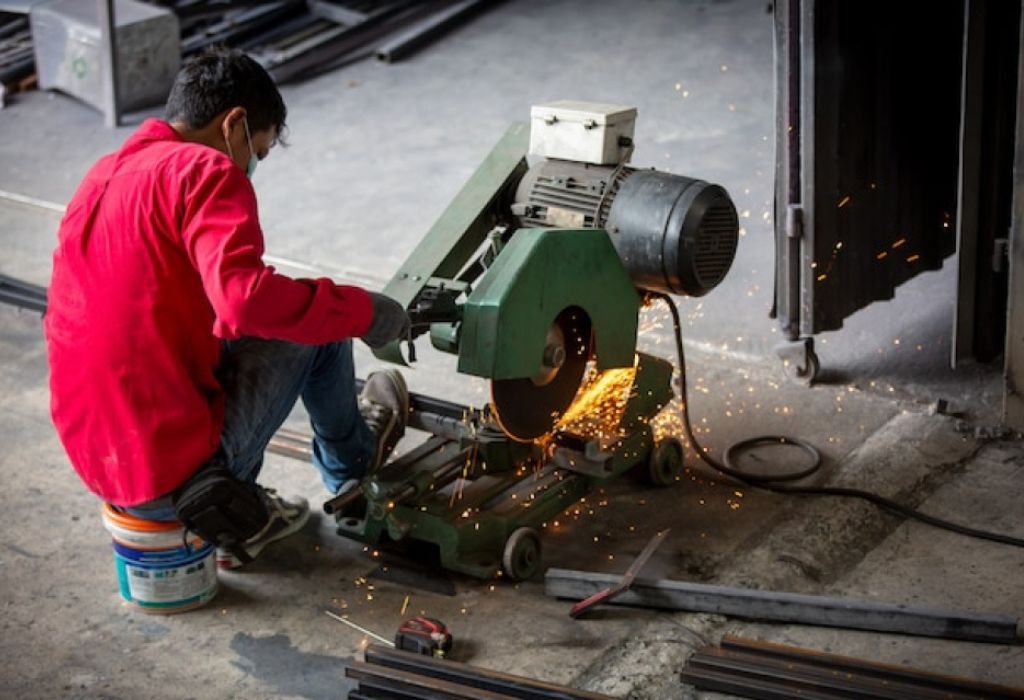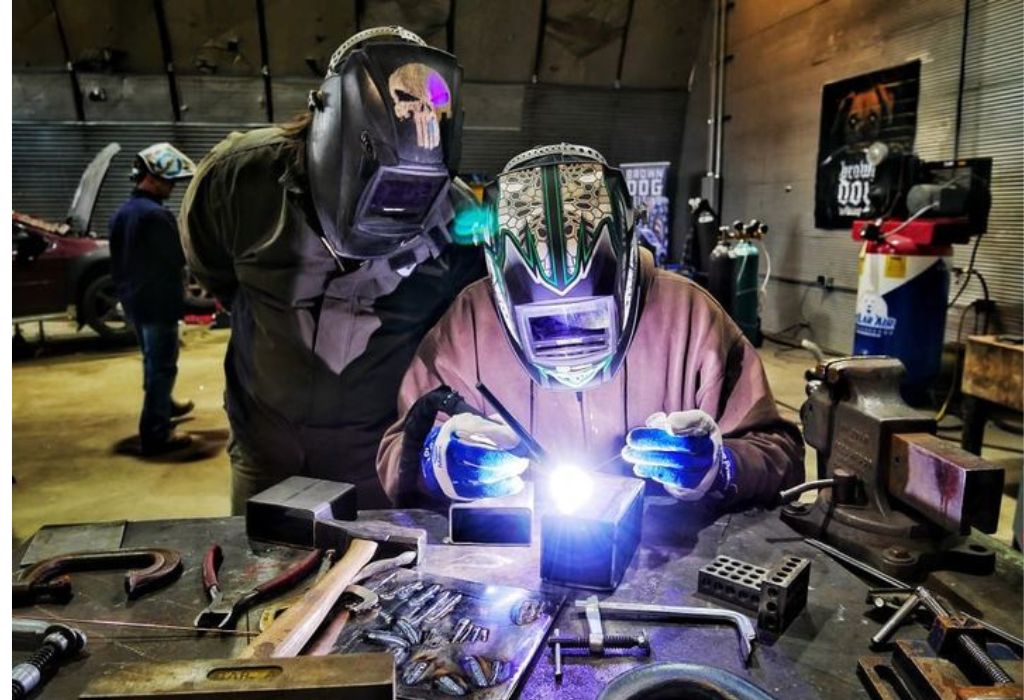A bright beam slices through stainless steel like butter. In seconds, two edges fuse with a mirror-finish joint that barely needs grinding. The welder steps back, surprised at the precision and speed.
That scene sums up why many fabricators now ask: are laser welding machines good for daily workshop use or just for high-tech industries?
Laser welding once belonged to aerospace labs and luxury automakers. Today, handheld fiber-laser systems promise clean seams and fast learning curves for ordinary shops. According to Grand View Research, the laser-welding market is growing over 5% annually, driven by small-shop adoption (source). Another study shows laser welders can be 4–10 times faster than TIG on thin stainless (source).
Speed, precision, and lower cleanup sound ideal—but what about cost, durability, and everyday practicality? Let’s explore whether laser welding machines are truly good for everyday use.
What Is a Laser Welding Machine?

A laser welding machine joins metals by focusing a high-energy beam onto a tiny spot. The concentrated heat melts and fuses the joint, leaving a narrow, clean seam.
Modern systems use fiber-laser or diode sources with optical cables, wobble heads, and optional wire-feed attachments. They appear in handheld, robotic, or benchtop formats depending on power and application.
What makes laser welding different from MIG or TIG?
It uses light energy instead of an electric arc, so heat input and distortion are far lower.
Which laser type is most common?
Fiber-lasers dominate metal welding because they’re efficient and maintenance-friendly.
Can it weld all metals?
Most steels, stainless, aluminum, and even copper—with tuned parameters.
Is it safe?
Yes, but operators must wear certified laser-protection gear and use enclosures for Class 4 beams.
Can beginners use it?
With training and safety awareness, yes—its learning curve is short compared to TIG.
Are Laser Welding Machines Good?
In short, yes—but only if the job fits. Laser welders deliver high precision, low heat distortion, and minimal cleanup, making them excellent for production or high-finish work.
They outperform traditional methods when parts are clean, tight-fitting, and thin. However, they struggle with poor fit-up or heavy structural steel.
Do laser welders replace TIG or MIG?
Not entirely—they complement them. Use laser for precision, MIG/TIG for gap-filled or dirty joints.
Are results stronger?
Strength is comparable or better when penetration and parameters are correct.
Is it reliable for everyday jobs?
Yes, for repeatable parts or controlled shop environments. Outdoor or field work still favors arc methods.
Does it reduce post-weld cleanup?
Dramatically. Most laser seams need little or no grinding or polishing.
Are lasers cost-effective?
Over time, yes. Higher purchase price is offset by faster throughput and lower rework.
How Laser Welding Works
Laser welding uses keyhole or conduction-mode fusion. The beam melts the metal instantly; capillary action fuses the edges as it cools.
Systems can run continuous-wave for deep penetration or pulsed mode for delicate parts. Some add oscillation (“wobble”) heads and wire-feed to handle wider gaps.
What thickness can it weld?
From 0.3 mm sheet to about 6 mm, depending on power and setup.
Can it add filler metal?
Yes—wire-fed lasers improve strength and gap tolerance.
Does it overheat parts?
No. Its narrow heat-affected zone limits warping and discoloration.
Can reflective metals cause trouble?
Yes—aluminum and copper reflect the beam; higher power or coatings help absorption.
Do handheld models use water cooling?
Most fiber-laser welders include compact chillers to stabilize optics and source.
Advantages of Laser Welding
Laser welding is popular for four main reasons: speed, precision, appearance, and automation potential.
It’s ideal for industries needing accuracy and low rework—automotive, aerospace, medical, and electronics. Even job shops benefit from instant fit-and-finish quality.
Is it faster than TIG or MIG?
Yes. Studies show up to 10 times faster on thin stainless and mild steel (source).
Does it reduce warping?
Significantly, since heat input is localized.
Can lasers weld dissimilar metals?
Yes—with precise parameter control and filler wire.
Does it integrate with robots?
Perfectly. Automation is easier due to beam control and consistent focus.
Is rework nearly eliminated?
Often yes—welds emerge smooth, bright, and pore-free.
Limitations of Laser Welding
Despite its advantages, laser welding isn’t universal. It demands tight fit-up, clean surfaces, and upfront investment.
Gap tolerance is the main limitation; lasers can’t bridge large separations like Stick or MIG. Power supplies and optics also require careful maintenance.
Why is fit-up critical?
Because the beam is so narrow—gaps wider than 0.2 mm may fail to fuse properly.
Is cost the biggest drawback?
Yes. Machines can cost 5–10× more than entry-level MIG units, though prices are falling.
Does surface dirt matter?
Absolutely. Rust, paint, or oil scatter the beam and weaken the weld.
Are there safety concerns?
Class 4 lasers need eyewear and enclosures to prevent reflections.
Can they weld outdoors?
Not ideal. Wind and bright sunlight interfere with optics and shielding gas.
Everyday Applications

Laser welding is no longer limited to laboratories. It now serves automotive repair, metal furniture, signage, HVAC, and kitchen fabrication.
In small shops, handheld lasers replace TIG for thin stainless steel doors, railings, and panels. Jewelers and electronics makers use micro-lasers for precision seams.
Is it good for car bodywork?
Yes, for sheet-metal seams and stainless exhausts.
Can it handle aluminum frames?
Yes, with proper power and pulse control.
Does it work for pipe and tank fabrication?
Excellent for leak-free, sanitary welds in food and pharma.
What about artistic metalwork?
Ideal—laser seams are almost invisible after polishing.
Can it repair molds or dies?
Yes, pulsed lasers fill micro-cracks without altering surrounding metal.
Laser vs MIG/TIG
When comparing, remember: laser equals precision, arc equals tolerance.
MIG and TIG excel on thick, rusty, or gapped material. Lasers dominate thin, clean, repetitive production.
Which is stronger overall?
Strength is similar when parameters are correct, but lasers reduce heat-affected defects.
Which is cheaper to start?
MIG/TIG by far. Entry MIGs cost <$1000; handheld lasers >$5000–$10 000+.
Which offers better finish?
Laser wins—no spatter or discoloration.
Which suits outdoors?
Stick or MIG. Lasers prefer enclosed spaces.
Which is easier to automate?
Laser, due to beam control and integration with robots or cobots.
Handheld Laser Welders for Small Shops
The game-changer for everyday users is the handheld fiber-laser welder. These compact systems combine mobility and power in one package.
They allow even small fabrication shops to enjoy clean, high-speed welding without robotics. Training takes hours, not weeks.
Are they really portable?
Yes—weights around 30–50 kg make them mobile with a chiller unit.
Can one person operate safely?
Yes, with laser eyewear, gloves, and controlled workspace.
Do they need shielding gas?
Yes, usually argon or nitrogen to protect the molten pool.
Can they fill gaps?
With wire-feed wobble heads, yes—gaps up to 0.5 mm are manageable.
Are results consistent?
Very. Many shops report near-TIG quality after minimal tuning.
Power and Maintenance
Laser welders range from 500 W handheld units to multi-kilowatt fiber systems. Choosing power depends on metal type and thickness.
Maintenance involves optics cleaning, chiller checks, and alignment. While less frequent than arc torch maintenance, neglecting optics can reduce quality fast.
How much power is enough for stainless sheet?
A 1.5–2 kW laser handles up to 3 mm comfortably.
Do they need frequent calibration?
Not often—once a year with preventive service is typical.
Are consumables costly?
No electrodes or tips, but optics and protective glass require periodic replacement.
Can one power source serve multiple tools?
Yes, many systems share a fiber source with cutting or cleaning heads.
Is downtime high?
Minimal when serviced regularly.
Cost, ROI, and Training
While expensive upfront, laser systems pay back quickly in volume work. Savings come from speed, reduced grinding, and fewer rejects.
ROI examples: Some shops report 30–40% cycle-time reduction and fewer consumables within six months of adoption (source).
What is the typical cost range?
$7 000 – $20 000 for handheld; industrial systems exceed $50 000.
How fast can beginners learn?
Many reach production quality in under a day with supervision.
Do operators need certifications?
No formal license, but laser-safety training is mandatory.
How long until ROI?
Typically 6–18 months, depending on workload and power costs.
Can leasing reduce entry cost?
Yes—some suppliers offer monthly plans that include maintenance.
Environmental Impact

Laser welding is energy-efficient because it converts electricity directly to light without filler spatter or fumes. It also uses less shielding gas and generates minimal waste.
Is it greener than MIG/TIG?
Yes—lower fume output and gas use mean reduced environmental footprint.
Do lasers emit harmful light?
Only at high intensity; protective eyewear and enclosures block it completely.
Can it lower gas consumption?
Yes, typically 30–50% less than MIG/TIG.
Is it quieter?
Much quieter, improving workshop comfort.
Does it require ventilation?
Yes, still needed for vaporized metals, especially on coated materials.
Future Trends
Laser technology keeps advancing. Compact inverters, better optics, and AI-assisted seam tracking make systems smarter and cheaper.
Cobots already use laser heads to weld car frames and battery packs with millimeter precision. As prices drop, small fabricators will gain the same capabilities once limited to factories.
Will lasers replace arc welding entirely?
No—each process serves unique needs.
Are costs dropping yearly?
Yes, fiber components are declining ~10% per year.
Is automation mandatory?
Not for handheld units, but it boosts productivity for larger volumes.
Can AI set welding parameters automatically?
Emerging systems already adjust focus, wobble, and power in real time.
Will lasers enter construction or heavy steel?
Gradually, with higher-power hybrid systems and wire-feed heads.
Conclusion
So, are laser welding machines good for everyday use?
Absolutely—when the job involves clean metals, tight joints, and demand for precision.
They bring speed, strength, and cosmetic excellence to modern fabrication while reducing cleanup and distortion. Yet they’re not universal: poor fit-up, thick steel, or fieldwork still favor traditional MIG or Stick methods.
In the right hands and environment, a laser welder becomes a reliable daily tool, not a luxury. For shops aiming to elevate efficiency and finish quality, investing in one is no longer futuristic—it’s practical.
Final advice: Audit two recurring jobs in your shop. If cleanup time or rework costs dominate, a laser welding machine might pay for itself faster than expected.

I’m Darrell Julian, the founder, lead writer, and hands-on welding enthusiast behind ArcWeldingPro.com. With more than 15 years of real-world welding experience, I created this platform to share what I’ve learned in the field, in the shop, and in the heat of the arc.


